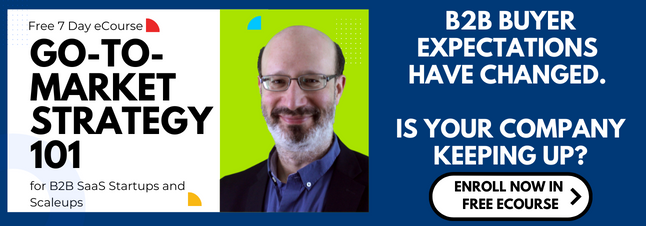Many go-to-market professionals at tech startups use cold emails, with mixed results, for lead generation. However, keep the buyer's journey stages in mind if you plan to do the same and want to stay contextually relevant.
In this blog post, you’ll learn why cold emails appeal to sales professionals at tech startups, how to send more successful cold email campaigns for the right buyer’s journey context, and what effective cold email marketing campaigns promote.
B2B customers today research and make purchase decisions very differently than they did as recently as a few years ago.
Today’s buyers are in the driver’s seat and often no longer need to speak with sales professionals during most of their buyer journey.
The buyer's journey is the active research process that a person goes through between when that person identifies a problem to solve, a goal to achieve, or a question to answer -– and when that person makes a purchase decision.
The buyer's journey consists of three stages: awareness, consideration, and decision.

The latest research from Gartner found that 83% of a typical B2B purchase decision -- researching, comparing options, and evaluating pricing -- happens before a potential buyer engages with a vendor.
McKinsey & Company has discovered that 70% to 80% of B2B decision-makers now prefer to make decisions digitally.
In its B2B Thought Leadership Impact Report, LinkedIn, in partnership with Edelman, concluded that “thought leadership remains critical to customer engagement, but breaking through the noise is harder than ever.”
These dramatic changes in buyer behaviors impact how tech startups generate leads, especially when it comes to cold emailing campaigns and contextualizing for the proper stage of the buyer’s journey.
All too often, when sending cold emails, the copywriter or sales development rep (SDR) tries to take the recipient from a stranger (pre-awareness) -- and accelerate them into a bona fide decision-stage sales opportunity.
This premature obsession with begging for a 15-minute meeting is what dooms many a cold email campaign, as it’s akin to proposing marriage on a first date.

Sure, it makes for an exciting storyline in a romantic comedy film. But this strategy of jumping the recipient from a stranger (pre-awareness) straight through to a sales meeting -- when that stranger has never heard of your company, can be like spinning your wheels and burning goodwill with the prospects.
What’s the answer? Think baby steps.
More successful cold email campaigns focus primarily on generating awareness- and consideration-stage leads rather than insisting on a one-on-one meeting or demo.
As a cautionary note:
Remember, at this point, the prospect knows nothing about you, your company, and your products/services.
So instead, lead with thought leadership content.
And keep in mind:
In partnership with Edelman, LinkedIn concluded that “thought leadership remains critical to customer engagement, but breaking through the noise is harder than ever.”
eBooks, webinars, or other kinds of free events can be great icebreakers to lead generation in the early and middle stages of the buyer’s journey (awareness and consideration).
Effective cold emails typically promote downloadable content or upcoming events in the awareness and consideration stages of the buyer’s journey.
And if you’re serious about Cold Emails and the Buyer’s Journey...
Learn more when you enroll now in our free 7-day eCourse: Go-to-Market Strategy 101 for B2B SaaS Startups and Scaleups.



Submit a comment